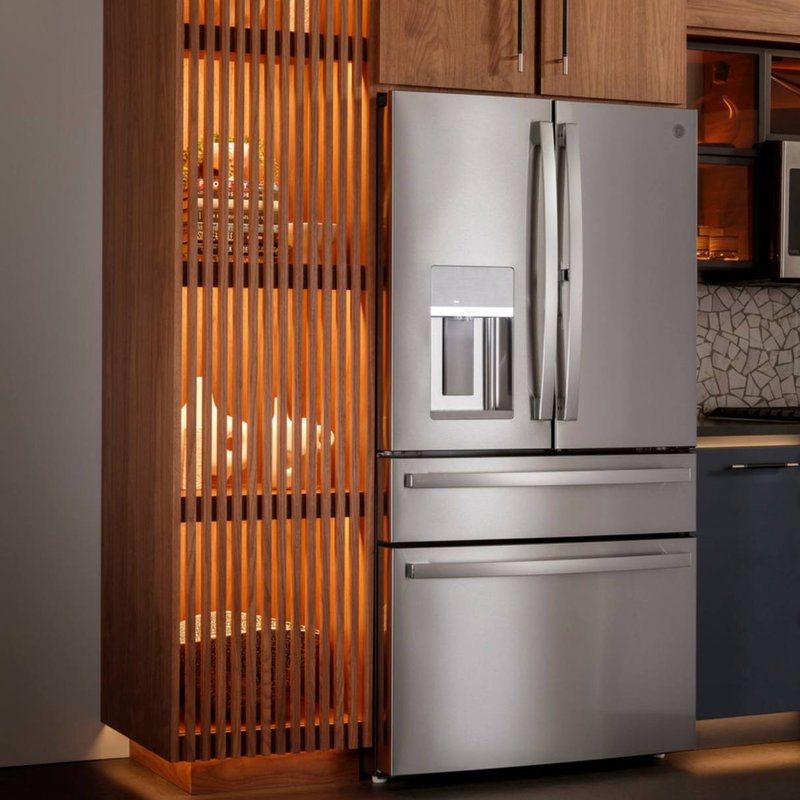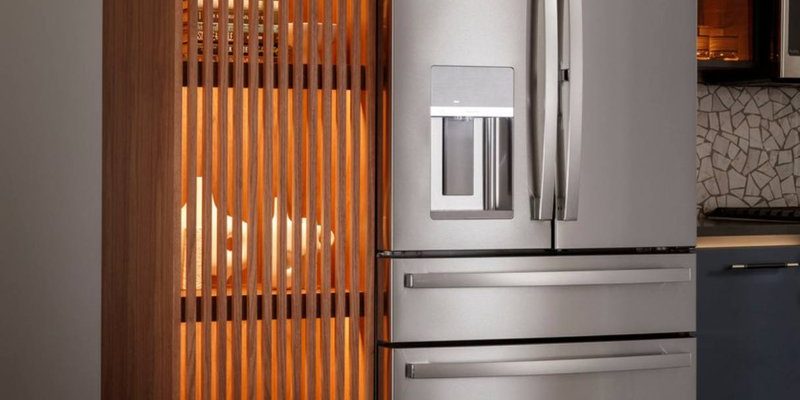
So, you’re going about your day, and you decide to raid the fridge for a snack. You open the door, and there it is—an error code F1 flashing across the control panel. What’s that about? Is your fridge about to give up on you? Don’t worry! It might seem like your refrigerator is suddenly speaking in code, but we’re here to break it down for you. When your GE refrigerator shows an error code, it’s like a little cry for help. It’s trying to tell you something’s not quite right, just like how your car’s check engine light pops on when it’s unhappy.
Error code F1 on a GE refrigerator is essentially its way of saying, “Hey, my control board’s got a problem!” Think of the control board as the fridge’s brain, managing all its many functions. If the brain isn’t working correctly, the fridge can’t think straight, so to speak. But don’t panic! Before you rush into a costly repair or consider it toast, let’s dive into what this all means and what you can actually do about it.
Understanding Error Code F1
When you’re faced with the infamous F1 code on your GE refrigerator, it’s basically telling you there’s a communication problem with the main control board. Imagine the control board as a conductor in an orchestra. It makes sure the parts of your fridge work together in harmony. If something disrupts this “conductor,” the entire performance goes off-key. The F1 error is usually related to some form of malfunction or glitch in the main control board or associated wiring.
There is a possibility that this error is merely a temporary glitch. Like when your computer needs a reboot to work correctly, occasionally, turning your refrigerator off and on again can reset the system enough to clear the F1 code. However, if the problem persists, it might mean there’s a deeper issue at play. Things like faulty wiring or a damaged board could be the culprits. If turning it off and on doesn’t work, it’s best to consider other avenues.
A consistent F1 code means your refrigerator is struggling to control its functions, impacting everything from your fridge’s cooling capabilities to its defrosting schedule. If ignored, this can lead to spoiled food and a hefty repair bill. The control board, being the heart of operation, impacts nearly every working part of your fridge, so addressing an F1 issue quickly is crucial for maintaining your fridge’s health and efficiency.
Common Causes of Error Code F1
You might be wondering, “What exactly causes this error in the first place?” Well, several factors could lead to an F1 error code. The most common cause is wear and tear over time. Just like any household appliance, the control board can wear out. If your fridge is getting up there in years, the components of its ‘brain’ might just be tired and due for replacement.
Power surges can also inflict damage on the control board. Imagine the electricity flowing into your home as a smooth river. Sometimes, when lightning strikes or there’s a hiccup in the power line, that smooth flow turns into a raging torrent. This surge can fry sensitive components in your fridge’s control board, leading to errors like F1. It’s kind of like having a sudden surge of adrenaline—it’s not always a good thing!
Sometimes, it’s as simple as a loose wire or connection issue. Just like when your headphones crackle due to a bad connection, your refrigerator can develop connectivity issues. Over time, vibrations from normal operation or even a recent move can loosen wires and connections. Checking the wiring for security and integrity can sometimes resolve the problem without needing to replace the entire board.
Troubleshooting and Fixing Error Code F1
So, how do you go about fixing this issue? Start with the basics. First, try a simple reset. Unplug your refrigerator for about 5 to 10 minutes and then plug it back in. It sounds almost too simple, right? But sometimes that’s enough to clear a temporary glitch and get your fridge back on track.
If the error persists after a reset, you might need to get a bit more hands-on. Inspect the wiring. Look for any signs of damage, wear, or disconnection. Sometimes, just a little reconnection here or there can solve the problem. If you’re not comfortable doing this yourself, it might be time to call in a professional for a closer look.
If after checking the basics nothing changes, the problem might lie deeper, potentially in the control board itself. Replacing a control board can be a bit of a task, and not something you typically want to DIY unless you’re comfortable with electronics. At this stage, reaching out to GE customer support or a local appliance repair service would be your best bet. They can offer a definitive diagnosis and fix, saving you time and possibly avoiding further damages.
Preventing Future Error Codes
You’ve tackled the F1 error this time, but how do you prevent it from happening again? Regular maintenance and care is the key here. Think of it like keeping your car running smoothly with regular oil changes and tune-ups. Start by ensuring your refrigerator is plugged into a surge protector. This is much like putting a helmet on when bicycling – it’s a small step that offers significant protection.
Keep an eye on your refrigerator’s general health. Regularly clean the coils and check the seals on your doors. Ensuring these components are in tip-top shape helps keep your fridge from overworking, which in turn reduces stress on the control board. It’s a bit like keeping your home clean to maintain your mental health—the cleaner and more organized you are, the less stressed you feel.
Moreover, it’s a good idea to give your refrigerator some breathing space. Make sure it’s positioned with adequate airflow around it. A crowded, overheated space forces your fridge to work harder, which isn’t good for the internal components. Keeping it cool from the outside helps keep the inside components from overheating and gives them a longer life.
At the end of the day, understanding and addressing the F1 error code can save you time, stress, and money. Taking these steps can lead to a happier, healthier refrigerator, which keeps your food fresh and your kitchen running smoothly.
